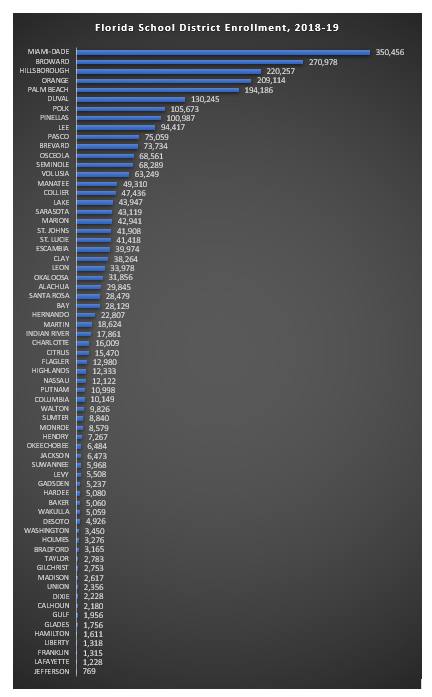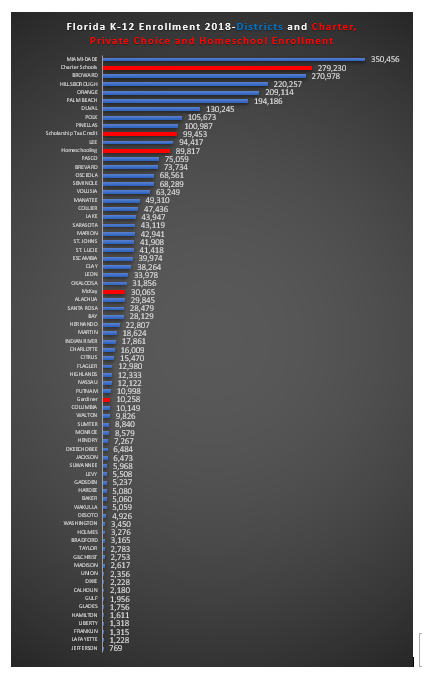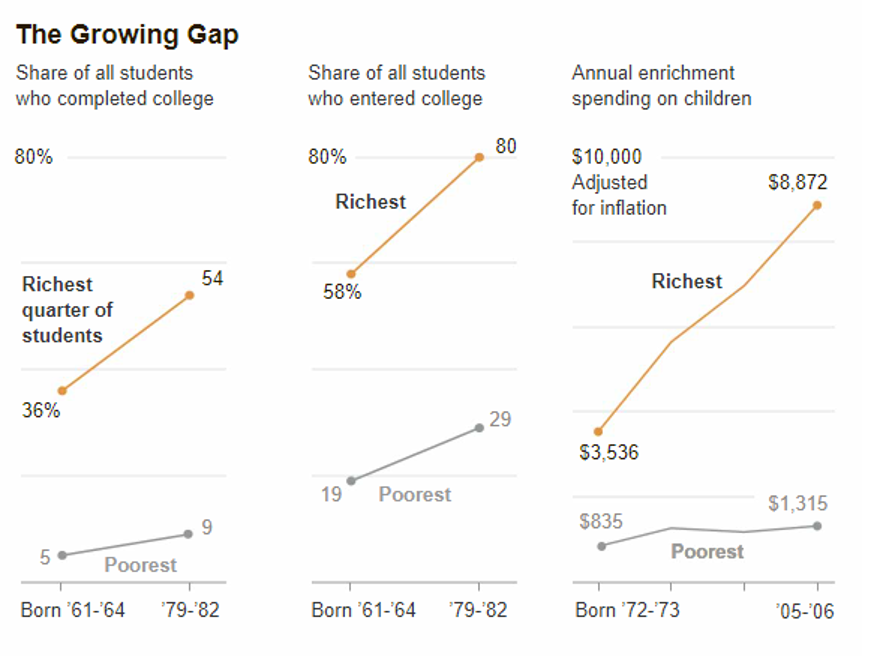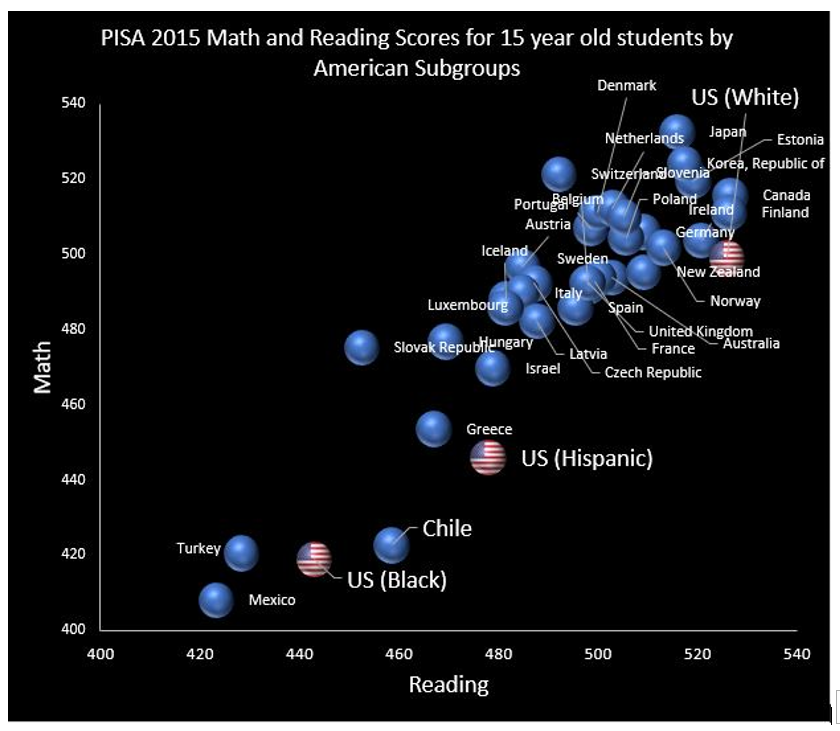
Florida students are heading back to school for the 2019-20 academic year and into a school system that remains stable, but which has been evolving. This school district enrollment chart looks similar to the way it looked at the end of the 20th century, but with more students:

Plenty of continuity here: The districts with large enrollments in 1999 still have large enrollments in 2019, and the ones that were small and rural in 1999 still are small and rural in 2019, etc. Overall, Florida schools have dramatically improved their academic performance since 1999.
A much higher percentage of Florida students displayed the sort of mathematics and reading ability in the most recent NAEP than the previous generation displayed in the 1990s. If you are a Florida resident aged Gen X or above, rejoice, because it’s likely the kids coming up will be better educated, on average, than your generation. You’ll need as much of this as you can get in the not-so-distant future.
Former Intel Corporation chairman of the board Craig Barrett described the need for “tension in the system” when describing how to improve K-12 education. What does tension in the system look like in terms of Florida K-12 enrollment? Funny you should ask.

To my eye, this looks like a modest amount of tension in the system.
Florida districts enroll more students, spend more money, and employ more people than they did in 1999, which is nowhere near as important as the fact that the students learn more today. Charter schools are public schools with a different governance model and are delightfully free of attendance boundaries. Florida’s private choice programs exclusively serve low-to-middle income families and students with disabilities. Innovators are developing new deliberately diverse school models to give students the opportunity to learn in new ways.
Educators have been given the opportunity to create new schools. Twenty-some odd years into this project, we see clear benefits to teachers and families, and the fears of opponents have failed to materialize. This should lend confidence to Florida’s reformers, as a still greater issue looms, demonstrated in this graph from the New York Times:

The poor aren’t getting poorer, but they are not accessing learning opportunities outside of schools at the accelerating rate seen among the well-to-do (see third chart on the right on the above graphic). Wealthy Americans already have education savings accounts in the form of their wallet. They draw upon public dollars when enrolling their kids in districts and charter schools and then the second world of enrichment learning in the form of summer camps, private lessons, private tutors, etc.
If you have the unsettling feeling that wealthy families buy access to the best district schools and then the best of everything else, that’s only because this is the world you’ve been living in since you were born, and the trend has been accelerating since 1972 or so.
International academic results show the American system is, on average, working out relatively well for American Anglo families, although one could certainly argue that the combination of high public and private spending should produce spectacular rather than respectable results. But this system is working out very poorly for students of color, as can be seen in international exam results.

Florida kids will be returning to a school system that has been slowly evolving. Disadvantaged kids have benefited, but what they really need is a good dose of punctuated equilibrium.



All so extremely interesting – not really – because in Scottsdale we are watching the ultimate lab test. Head to head – the supposed best High Schools in the Nation – getting their asses kicked by SUSD schools.
Time to strike the pole, pitch the tent and head to the next town, snake oil guy.